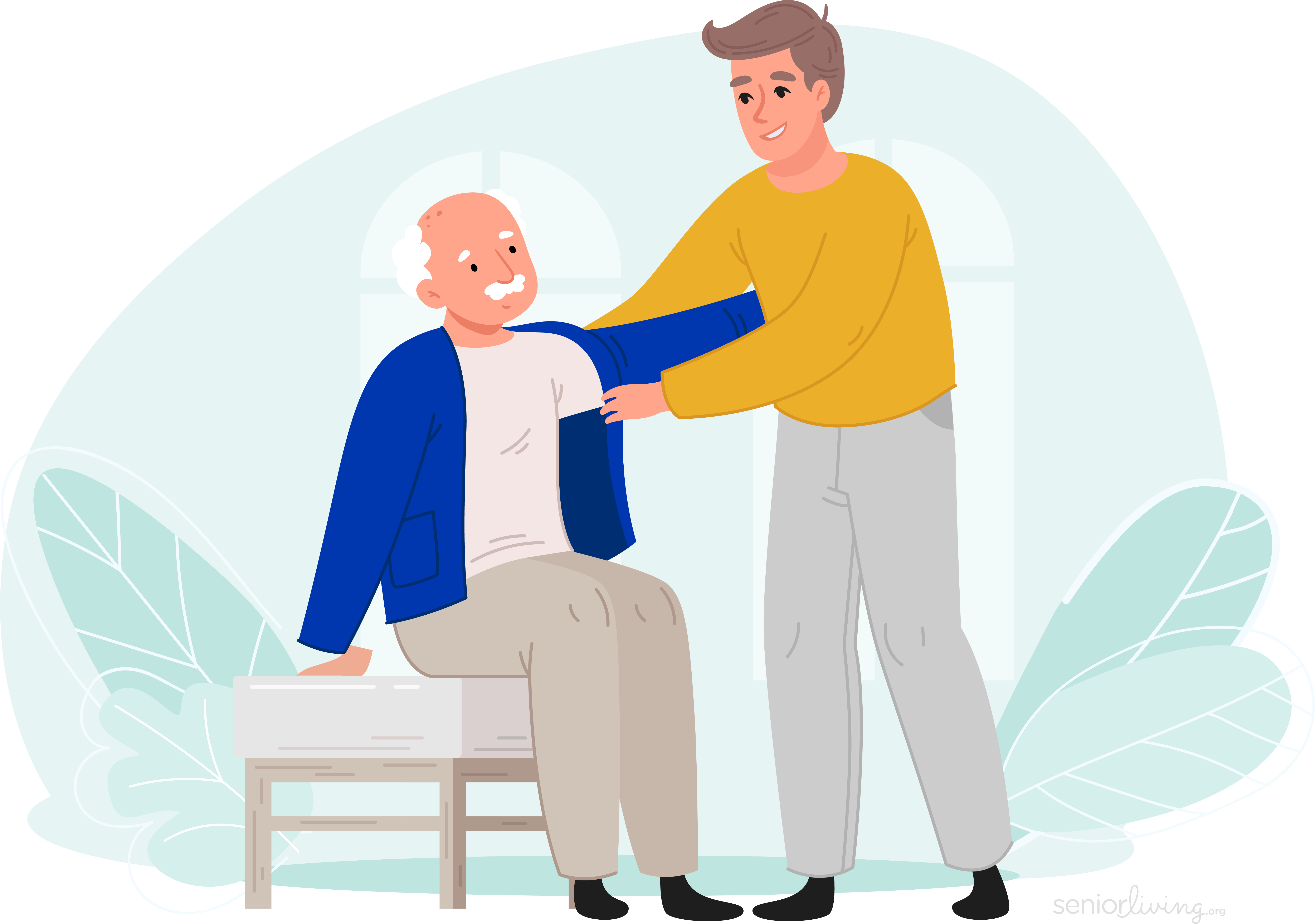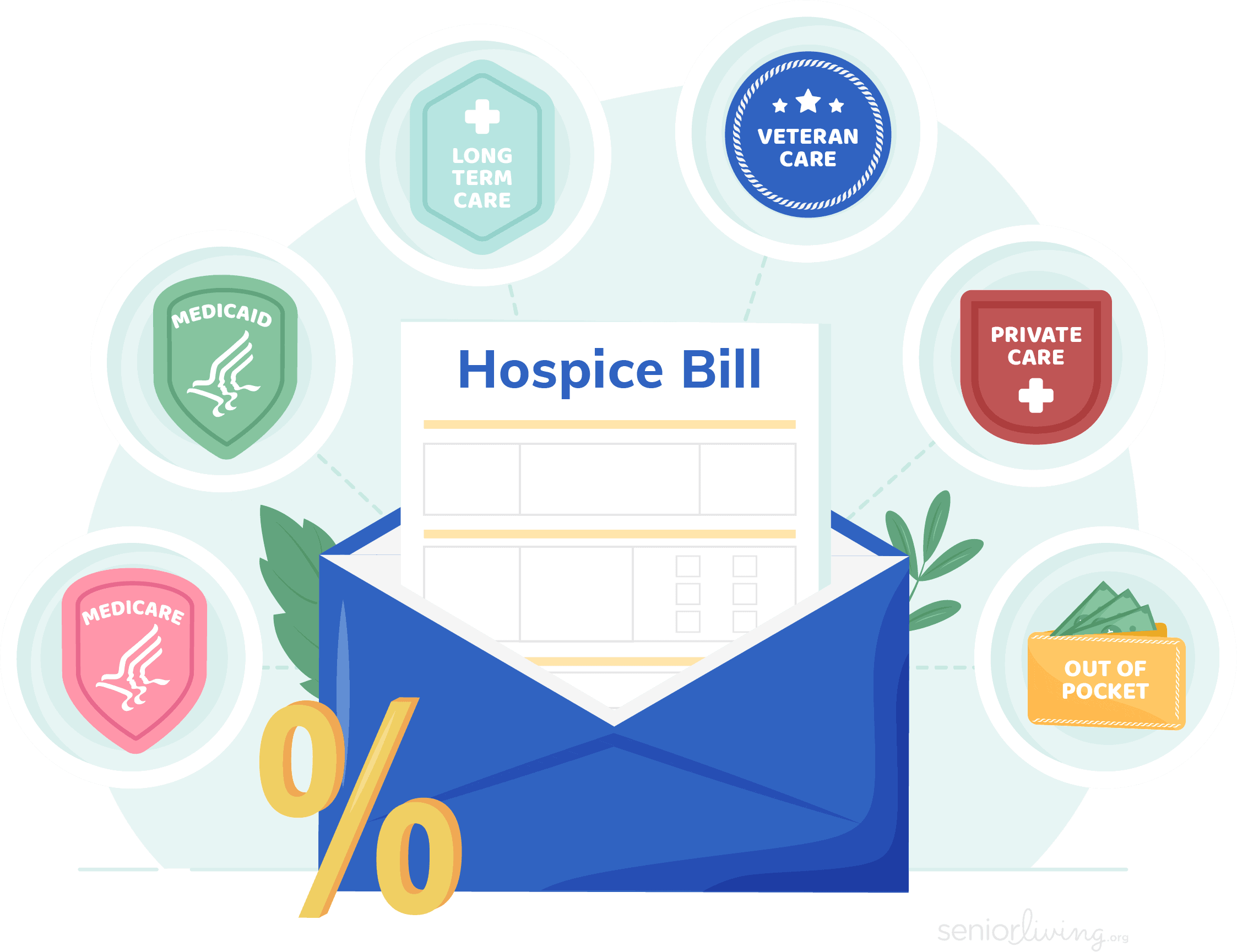Nursing Homes vs. Hospice Care
Nursing homes provide daily assistance for those who can no longer live at home, while hospice care provides compassionate, end-of-life care for those with terminal illnesses.
SeniorLiving.org is supported by commissions from providers listed on our site. Read our Editorial Guidelines
Find Nursing Homes or Hospice Near You
Join 1,019,247 Seniors Who've Searched for Housing Communities on SeniorLiving.org.
Find Nursing Homes or Hospice Near You
Nursing Homes vs. Hospice Care: Key Takeaways
- Nursing homes are places that offer care and a variety of services for seniors who can no longer live at home and need daily assistance.
- Hospices provide compassionate, end-of-life care that provides pain relief and comfort to those with terminal illnesses.
- Hospice care can be provided in nursing homes as well as assisted living facilities, hospitals, free-standing hospice facilities, and homes.
Maybe your loved one was healthy for years before gradually declining. Alternatively, maybe your loved one’s health was fine but has taken a sharp and sudden turn for the worse. You’re wondering if it’s time for a nursing home or hospice care. Which makes the most sense for your loved one’s situation? We will answer your common questions in this guide to help you make an informed decision.
Our free housing and care finder uses your unique needs to curate a list of the best options in your area.
How are Nursing Homes and Hospice Care Alike and Different?
While both provide care, nursing homes are places that provide many kinds of care, including hospice care in some cases. Hospice care is a type of specialized care for those with an anticipated life expectancy of six months or less; it’s for when a cure isn’t an option, and in which the care focus shifts to symptom management and quality of life, according to The Hospice Foundation.1
In general, if you have a loved one who is terminal, most will prefer to get hospice care at home. Another option is a hospice-specific facility. Or, if your loved one already lives in a nursing home, they may be able to receive hospice care in a specialized hospice unit or wing of the nursing home.
Nursing Homes vs. Hospice Care: A Side-by-Side Comparison
| Nursing Home | Hospice Care | |
|---|---|---|
| Care Period | Typically long term | Short term (six months or less, with renewals possible) |
| Financials | Medicaid, private insurance, Veterans Health Administration, long-term care insurance, life insurance, self (or a combination) | Medicare, Veterans Health Administration, Medicaid (in most states), private insurance, community sources, self (or a combination) |
| Daily Living Activities, Such as Feeding and Laundry | Yes | Usually no but can be arranged separately |
| Focus on Getting Better? | Medication for ongoing conditions can be given, and residents can visit doctors for treatment (usually offsite). | No. Focus is on comfort, pain management, and dignity. However, hospice care is not irreversible. It can be stopped if the patient decides to seek treatment for the condition. |
When Should You Consider a Nursing Home?

Seniors tend to arrive in nursing homes after caregivers take care of them at home or after spending time in assisted living facilities. Many folks end up in nursing homes after a fall or mishap that happened due to living alone. Their health may be less than robust, but these residents are generally not “terminal.” They don’t have an illness or condition that should prove fatal in six months or less, which is the requirement to be eligible for hospice care.
That said, if they develop a serious illness and have a terminal condition, it is possible to receive hospice care in some nursing homes. Keep in mind that nursing homes usually have few hospice residents compared to the general population.
FYI: About 70 percent of U.S. nursing homes are operated for profit, 25 percent are nonprofit, and the balance are government-owned. Generally speaking, nonprofit nursing homes have higher staffing levels, so you might pay attention to that while choosing a nursing home for your loved one.2
So, how do you know your relative is ready for a nursing home? The decision depends on the person and the family. But it’s usually when they’re unable to care for themselves safely or have chronic conditions.
If they’re cognitively challenged, for example, and need a good deal of help with activities of daily living — such as dressing, bathing, or moving around — they’ll likely be referred to nursing homes. Staffers such as nurse’s aides help with the care, which is available day and night, seven days a week. Nursing homes usually provide a wide range of entertainment, classes, and social activities as well.

SeniorLiving.org is supported by commissions from providers listed on our site. Read our Editorial Guidelines
When Should You Consider Hospice Care?

As soon as you hear the news, you should consider hospice services. When a patient is in hospice care, medical staff are no longer looking to treat or “cure” the disease; however, they are still around to ease your relative’s transition into this next phase of their life. Much of your loved one’s daily care can be provided by family or friend caregivers who have been trained by hospice personnel and work together with them.
According to the National Hospice and Palliative Care Organization (NHPCO), here’s what an interdisciplinary hospice team usually does to help your loved one and the family:3
- Instructs the family on how to care for the patient
- Manages the patient’s pain and other symptoms
- Makes short-term inpatient care available when pain or symptoms become too difficult to manage at home, or the caregiver needs respite time
- Provides medications and medical equipment (hospital bed, wheelchairs, or walkers)
- Assists the patient and family members with the emotional, psychosocial, and spiritual aspects of dying
- Provides grief support and counseling to your loved one, family, and friends
- Delivers special services like speech and physical therapy when needed
Home care aides help with basic necessities, such as dressing and getting out of bed, and many also help with laundry, cooking, and the like. Medical service providers and nurses provide pain medications. Doctors are typically involved in helping establish a plan of care and are called in for complex issues. Hospice workers also help your relative and family with resources and coordinate care.
Hospice care is usually given wherever a person lives, be it at home, in a nursing home, or in an assisted living facility. There are also hospice-specific facilities; however, the goal, if possible, is for hospice care to go to where the patient already is. Sometimes a person receiving hospice care must be treated at a hospital. In such cases, the aim is usually to discharge them and return them to their home setting.
Hospice Care vs. Comfort Care: Doctors and nurses often refer to hospice or end-of-life care as comfort care. At its essence, hospice care is designed to provide comfort for the individual rather than treatment for their illness.
Starting Care in a Nursing Home
Similar to hospice care, a doctor certifies that nursing home care is necessary, and that starts the process of getting into a nursing home. Depending on your relative’s financial resources, they might already have an estate plan and/or long-term care insurance. Those with limited resources may need to apply for Medicaid.
Nursing homes are quite expensive. Many nursing homes accept residents who are on Medicaid. Remember that this program requires that their assets have fallen below a certain amount. What your relative (and their spouse, if applicable) is allowed to have varies by state. Furthermore, if they’re on Medicaid, most of the income they earn is expected to go toward helping pay for their nursing home care.
Did You Know? Hiring and retaining staff for nursing homes has become very challenging. Research shows that 87 percent of nursing homes are currently facing moderate to high staffing shortages.4
Hospice Care in Nursing Homes
Nursing homes and long-term care facilities often have small hospice units. Their staff may not provide the specialized hospice care. Instead, nursing homes may work with local hospice agencies to provide hospice care.5 Meanwhile, the nursing home staffers may continue to offer custodial care, such as help in dressing and bathing. Getting hospice care through a nursing home may be a good option for people who can’t remain at home.
Starting Hospice Care
Your relative will qualify for hospice care if they’re terminal and expected to pass within six months. That’s when you should find out about local hospice care. The first choice for most seniors is to get hospice care at home near family and friends in a familiar environment. Family members and friends can volunteer as caregivers or the family can pay for home aides. Some hospice groups even offer financial assistance programs that may help.
Pro Tip: Some people who receive hospice care live longer than six months, and their doctors recertify them for another six months. This can be an ongoing process. Some people also go off hospice care. Anyone who chooses to leave hospice care can be re-enrolled at any time, provided they meet the medical eligibility criteria.
A typical week receiving hospice care at home might involve two visits from a hospice aide, one visit from a registered nurse, one visit from an occupational therapist, visits from multiple family members, a visit from the chaplain, and volunteer visits for a few hours each. This allows the primary caregiver to either take a break or attend to other things.
A hospice aide (not an aide for activities of daily living) can help with activities such as:
- Mouth care/oral health
- Filing and cleaning nails
- Motion exercises
- Dressing changes
- Tube changes
- Bed linen changes
- Moving a patient in the bed to prevent bedsores
- Rubbing lotion on forehead, arms, feet, etc.
- Help with toileting and incontinence
- Light housekeeping
Unfortunately, people often wait too long before accepting hospice care. Sometimes this is because it’s hard to admit that your loved one is dying. Other times it’s because caregiving becomes too complex and you realize you need the help of hospice. The earlier someone starts receiving hospice care, the better. The predominant focus will then change to that of quality of life.6 Having hospice care best ensures that your loved one’s final months will be comfortable; it will help them live out their last days with comfort and dignity.
How to Pay for Hospice Care
Hospice care is a Medicare and Medicare Advantage benefit; it’s covered by most private health insurance companies, though the levels of coverage vary. It’s also usually covered by Medicaid and VA benefits. Room and board in a nursing home or hospice residential facility are not covered.8
Who Decides About Hospice Care?
Unless you have guardianship or the power to make certain types of medical decisions on their behalf due to dementia or Alzheimer’s Disease, the choice of whether or not to receive hospice care rests with your loved one. If they prefer to seek further treatment instead of hospice care, that too is their decision. Be sure to discuss the different options with them.
An estimated 1 million people who could be eligible for hospice care die each year without using it, according to a study from the Journal of the American Geriatrics Society. Services are especially underused by individuals who are not dying from some form of cancer.9
The sooner you get hospice services, the better. You and your loved ones will have more time to deal with the emotional stress regarding what’s happening and show your love and appreciation for one another. Your loved one can also get the comfort that untrained people can’t always provide. Hospice workers are trained, after all, to alleviate needless suffering. Many patients enter hospice care late on their journey. About 50 percent of patients were enrolled in hospice care for only 18 days or less when they could have been receiving valuable hospice services for months.10
Still not sure which type of care your loved one needs? Watch our video below that compares different types of senior care and housing.
Hospice Foundation of America. (2024). What is Hospice?
Kiplinger. (2023). 10 Things You Should Know About Nursing Homes.
NHPCO. (2022). NHPCO Facts and Figures.
AHCA NCAL. (2022). Survey: Nursing Homes Still Facing Staffing & Economic Crisis.
American Cancer Society. (2023). Where Is Hospice Care Provided and How Is It Paid For?
Hospice Foundation of America. https://hospicefoundation.org/
NHPCO. (2022). NHPCO Facts and Figures.
Hospice Foundation of America. (2024). Paying for Hospice Care.
Geriatrics Healthcare Professionals. (2019). Hospice Utilization in the United States: A Prospective Cohort Study Comparing Cancer and Noncancer Deaths.
NHPCO. (2022). NHPCO Facts and Figures.


